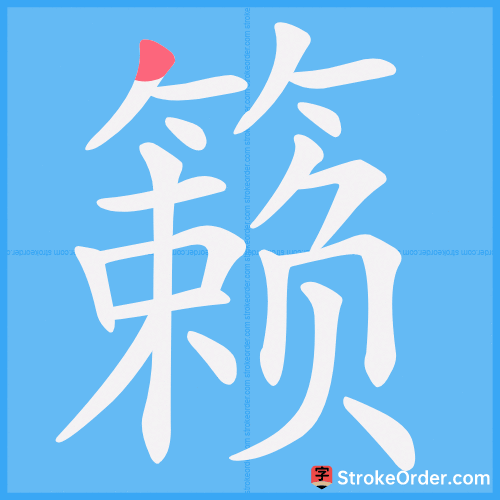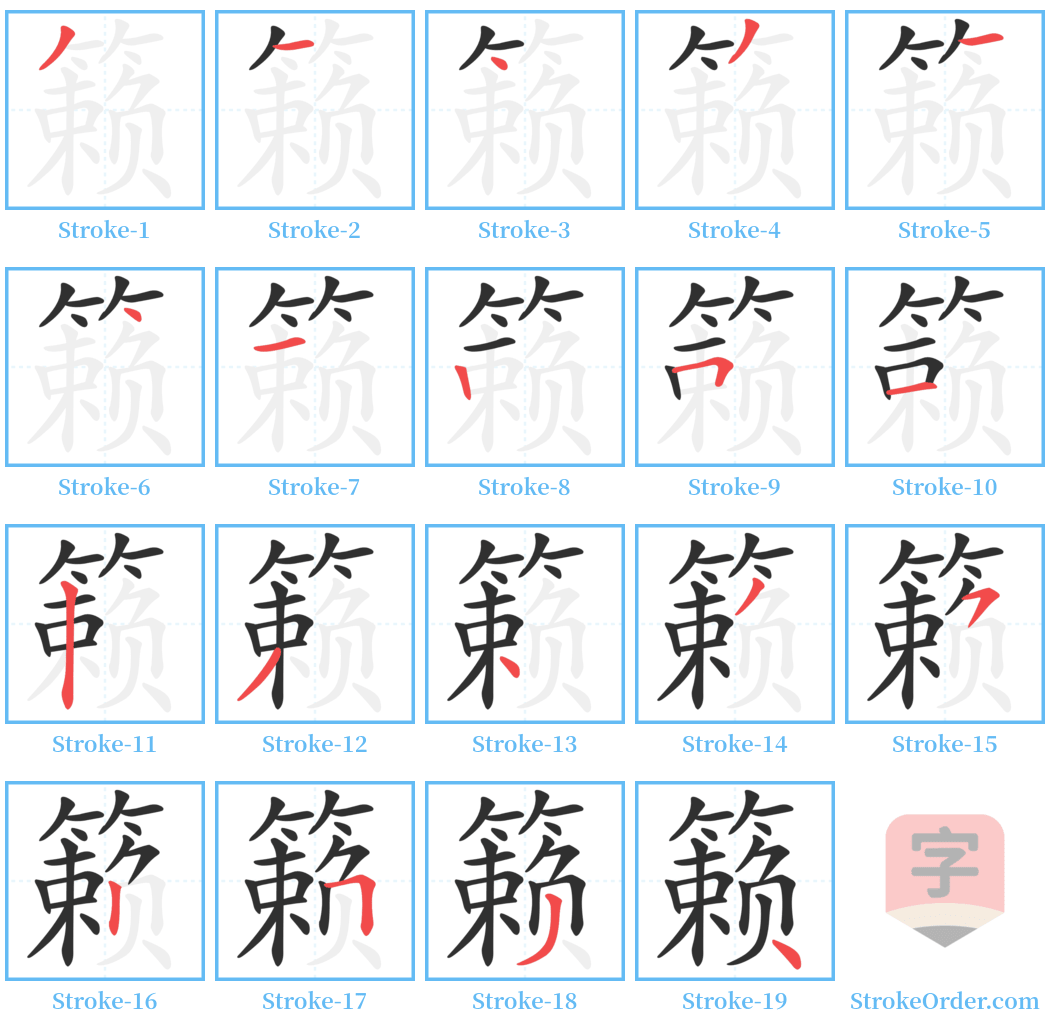籁 Stroke Order
Animated Stroke Order of 籁

Stroke Order Diagrams for 籁

Step-by-Step Handwriting Guide for 籁

Learn to Write Chinese Characters with Video Tutorials
Watch the video of writing the Chinese character "籁", learn the correct stroke order (笔顺) of the character "籁", and master the standard way of writing the character "籁".
Free Printable Handwriting Practice with Stroke Order: 籁
Printable Writing Practice Worksheet of "籁" in Portrait Orientation (Tian Zi Ge)

Printable Writing Practice Worksheet of "籁" in Landscape Orientation (Tian Zi Ge)

Information of 籁
Pinyin
lài
Radical
竹
Strokes
19 strokes
Usage
★★★★
Definition
music / musical pipe with 3 reeds
籁
lài
(名)
【本义】: 古代一种管乐器,三孔
(Original meaning: an ancient musical pipe with three holes)
【造字法】: 形声。从竹,赖声。
(Character formation: a phonetic compound; "bamboo" + "sound (rely on)")
【义】
1. 同本义 ([En.] an ancient musical pipe)
2. 从孔穴中发出的声音。亦泛指一般的声响 ([En.] sound)。
- 引:
1. 《史记·司马相如传》:吹鸣籁。 集解:“籁,箫也。”
(From "Records of the Grand Historian": "blow the sound of the lais"; note: "lai" refers to a kind of flute.)
2. 王勃《滕王阁序》:爽籁发而清风生。
(From Wang Bo's "Preface to the Pavilion of Prince Teng": "the爽籁 sets off a fresh breeze.")
- 例:
又如: 籁竽(箫与竽,用竹制的管乐器); 籁龠(古管乐器。籁,三孔; 龠,六孔)。又指箫
(For example: laiyu (flute and yu, bamboo wind instruments); laiyue (ancient wind instruments: lai has three holes, yue has six holes). It also refers to a flute.)
- 例:
如: 人籁(人口吹奏出的声音); 地籁(风吹孔穴发出的声音); 万籁(自然界的各种声响)
(For example: renlai (sound produced by the mouth); dilai (sound made by wind through holes); wanlai (various sounds of nature).)
Input Method for 籁
Pinyin
lai4
Wubi
tgkm|tskm
Cangjie
hdlo
Zhengma
mfrl
Four Corner
88982
Unicode
U+7c41
Same Pronunciation Characters